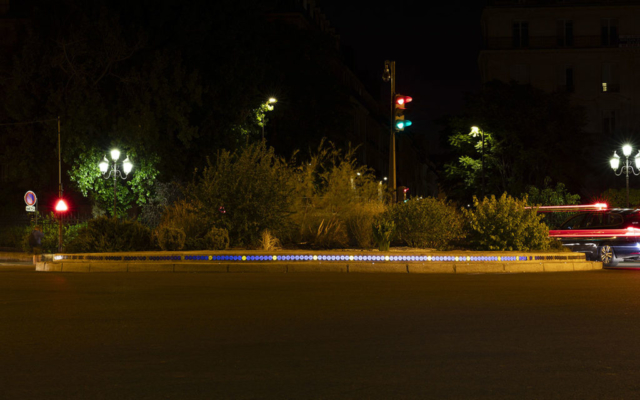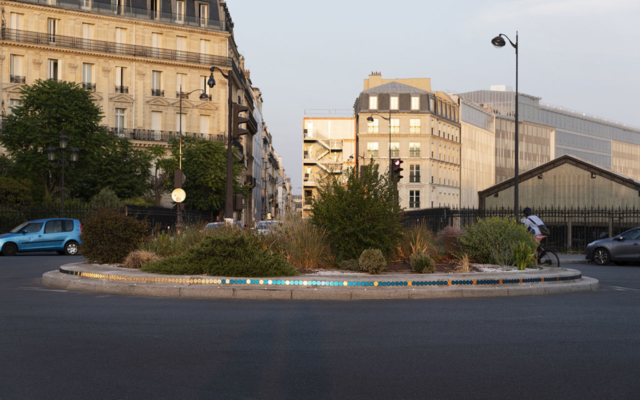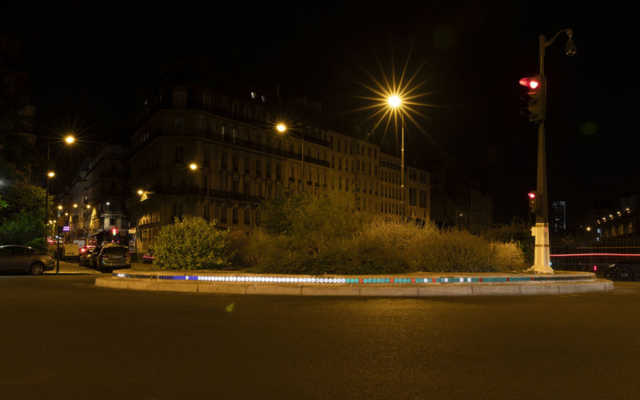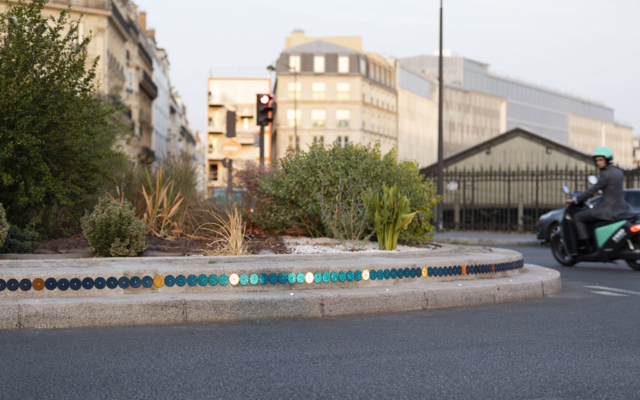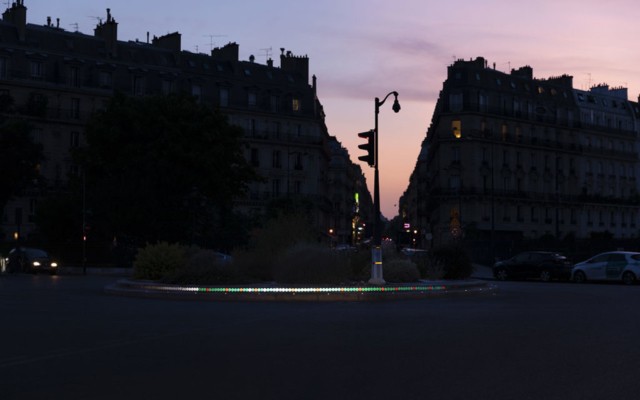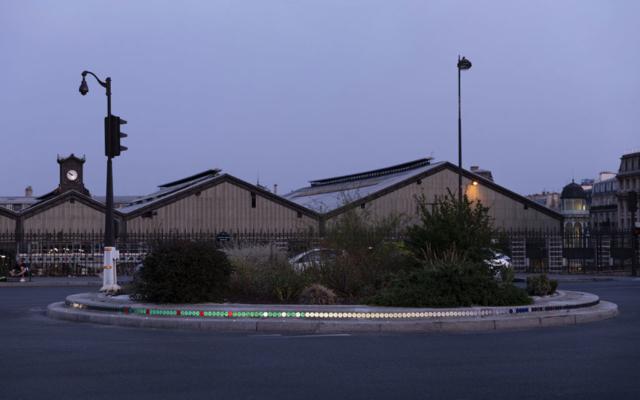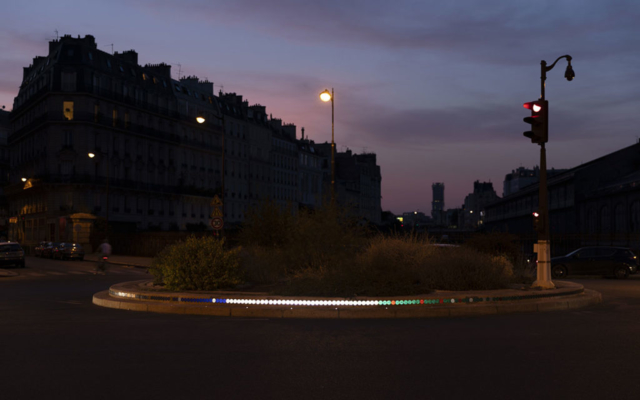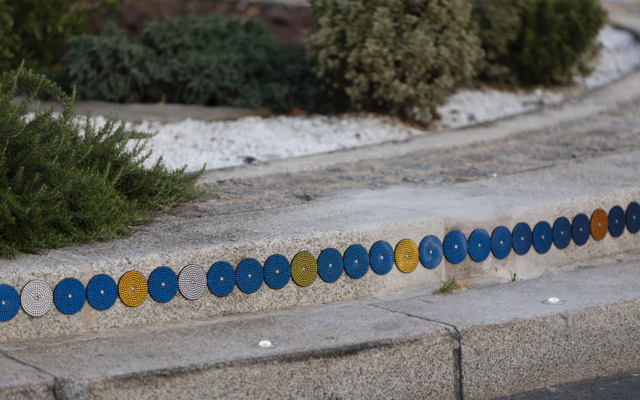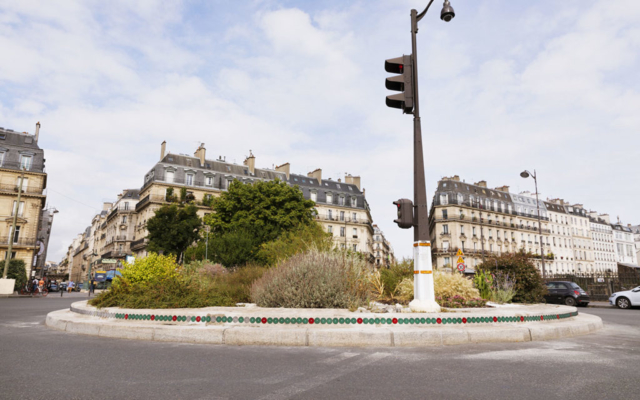Place de l’Europe-Simone Veil, Paris, FRANCE
2019 Realised in the frame of EMBELLIR Paris Contest
Site specific artwork in the Parisian public space
Photographies Guillaume Thomas
Transcending the landscape
Disks of luminous beads are arranged along a circular horizontal line. Their intensity increases and decreases in waves around a traffic roundabout like “zeniths” appearing and disappearing in an undulating motion. When the sun appears, the photosensitivity of the beads in the circle or “necklace” makes them shine. The coloured reflected light stands out in the urban landscape. The fluidity of the colours appears in chromatic transitions: green becomes red, which in turn is tinged with yellow; yellow turns into blue, which again calls for yellow, which turns into luminous white, which calls for the blue of the sky by day—which a few hours later will return to its opposite: midnight blue. This is the principle of the moments of colour and light that unfold during the day and ultimately plunge into nocturnal space. In the dark flow, the art installation is activated by our headlights. The light is reflected back to the driver, who seems to be the sole viewer of the work. This installation is designed to create an experience of real space.
The “necklace”
36 metres in diameter, the “necklace” surrounds the roundabout with 89,000 reflective glasses forming points of light. It is on the scale of the urban landscape and marks out the centre of the square. By day the natural light flooding the roundabout makes the “necklace” itself visible. At night, the circling cars and the flow of traffic arriving on the square from the adjacent streets illuminate the roundabout; each beam is reflected, transforming the work anew.
Simone Veil and Europe
The first president of the European Parliament in 1979, Simone Veil was a passionate advocate of a patiently constructed Europe. Madame Veil also embodied other struggles, such as the fight against anti-Semitism, the struggle for women’s rights, and the law authorising abortion. She was interred in the Panthéon on 1 July 2018.
Painting with glass beads and lights is like juxtaposing dabs of paint. Green results from neighbouring blue and yellow, yellow arises from red and green…This is a nod to the Impressionist painters who, standing on the Pont de L’Europe near the Gare St-Lazare, painted the steam from the locomotives shimmering in the sunlight. These painters expressed themselves with dabs of colour in order to create “additive synthesis”, which allowed them to preserve the brilliance of their painted colours via a phenomenon of optical vibration: the colours are mixed in the eye of the viewer.
Time
Under the square, trains move along on almost straight tracks arriving and departing from the station. Strong lines form a structured urban landscape below, while on the square above there is a sense of fluidity in the curves and the central circle. Under the square, the trains arrive and depart slowly—as if time itself has slowed. The gentle rumble of the trains below can be heard.
The space joins in with the movement and offers a new movement of its own. It turns into a movement that is perceptible in a luminous glow. It is as if the light reveals a constant influence upon ourselves, prefiguring a confrontation with the here and now. This light system (which consumes zero energy) evokes movement, endlessness, continuity, infinity, and seeks to make them visible.
Nathalie Junod ponsard
489 disks of reflective coloured glasses
